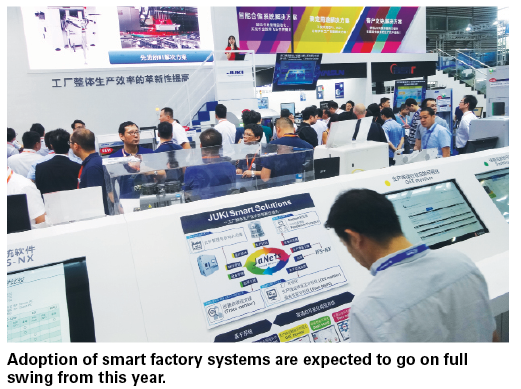

Industry Heightens Move to Magnify Smart Factories
M
anufacturing hubs that make use of internet of things (IoT) are on the rise. The concept of industrial IoT started to become more pronounced in 2016 and actual introduction to production sites happened in 2018.
From 2019 onwards, industry players believe industrial IoT will spread more intensely.
Production processes are diversifying because of the high-quality assembly for computerized vehicles, the continuing influx of mobile devices, increase in demand of industrial equipment for production automation, diversification of needs of consumers, among many others. For this reason, manufacturing techniques and devices need to be changed.
Surface mounter manufacturers connect devices on production lines through local area network (LAN) and digitize and exchange production data to visualize the state of operations. Then, they accumulate, analyze, and process the data by cloud or edge computing. IoT and machine-to-machine (M2M) maximize production line performance, streamlining management ranging from production planning and process preparation to shipment arrangement.

Leads Global Scene
Smart factories are continuously evolving to propel its use. In order to make factories smarter, which include the pre- and post-processes for assembly, companies are expanding their tie-ups and collaborations. In pre-processes, parts warehouses and automated guided vehicles (AGV) are combined as a system while automation of odd-shaped parts mounting and robots doing screw-tightening are employed in post processes.
FUJI Corporation has heightened its FUJI Smart Factory system, not only in Japan, but in other countries as well including China. Globally, more than 200 companies have already introduced this system.
Nobuyuki Soga, President, FUJI Corporation, said, "In order for Japan to lead the world as a technological powerhouse, Japan's assembly industry need to spearhead Industry 4.0".
FUJI's Nexim integrated-production system (assembly software) can prepare the data required for initiating production of multiple product models and can also make production plans. The system, moreover, provides a scheduling function for the entire assembly process, allowing precise time estimations ranging from preparation of necessary materials to completion of production in production lines.

 English
English Japanese
Japanese